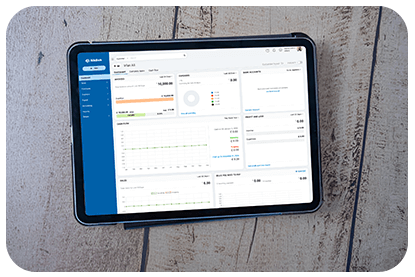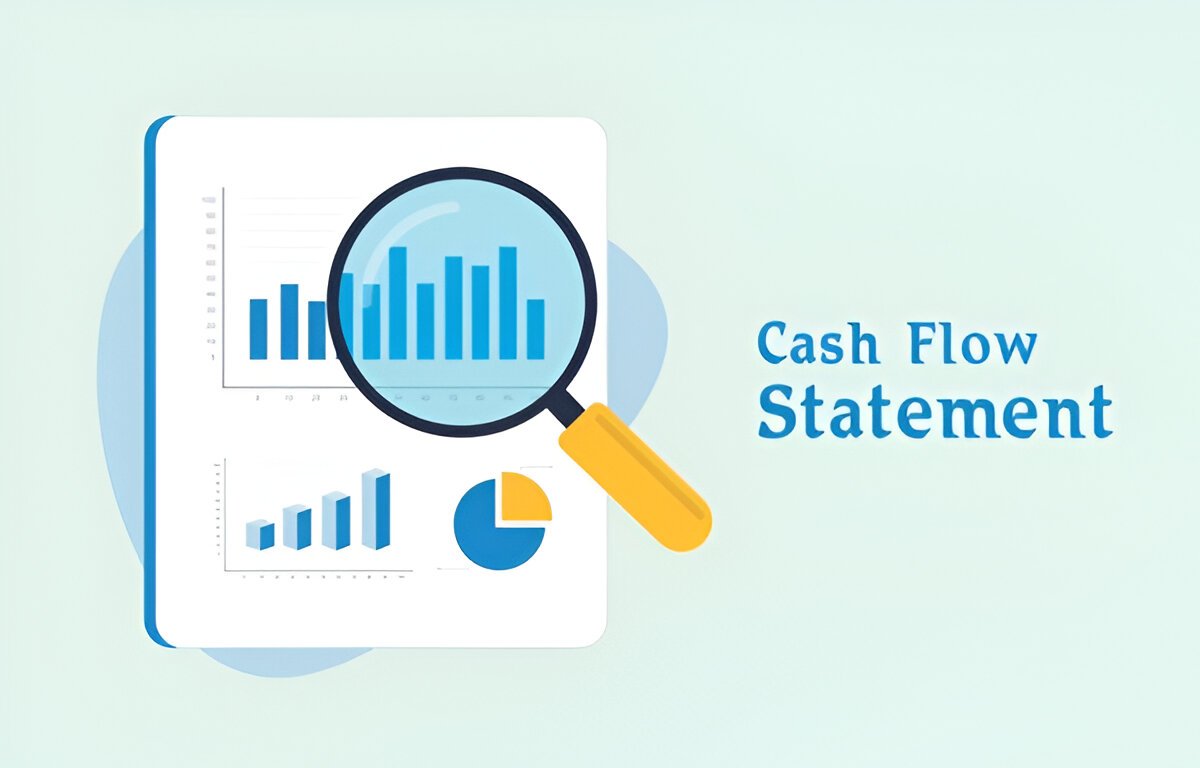19 April 2024
Cash Flow Statement Format: Key Sections and Their Importance
Cash flow statements are like a pathway in a company that provides an opportunity to evaluate the financial condition and the quality of the decision-making of a business. The first step in the cash flow statement format is to know the importance of the key elements and how they relate to cash flow management. To understand what a cash flow statement is and how the cash flow statement is the most important financial document in the company, we will split it into different parts.
The cash flow statement helps the company to gauge the cash flows that result during a period, usually a month, quarter, or fiscal year, and the ones entering and leaving the company. This tool allows businesses to trace the movement of money throughout the company so as to have a general understanding about the cash that is available. A cash flow statement comes in handy in the period where a company is in shortage, and that is the time a business can pay for its debts or invest in new developments or even distribute profits.
Understanding the Cash Flow Statement Format
Cash flow statement has a very simple format but presents essential information about the company’s financial condition. Such a statement, in general, is subdivided into the following three main parts: the operating activities, investing activities, and financing activities. Each particular part deals with a different part of cash flow, which, as a result, allows both businessmen and investors to see the sources and cash destination in a better way
1. Operating Activities
The first section in the cash flow statement is about money generated or spent through company’s main operations. It, generally, consists of revenues and expenses that are associated with the day-to-day activities of the business. It is a good indicator as it demonstrates how the company is compared to the generating cash flow from its primary operations daily in order to uphold the business.
Among the main items in this section are the following:
- Income from customers
- Suppliers’ payments
- Wages and salaries
- Other operating expenses
Companies could access the issue of their basic operations being profitable and sustainable by means of this section. In case the company receives a positive cash inflow through its primary activities, this will mean that the company is good at employing its cash, while a cash outflow may denote operational weaknesses.
2. Investing Activities
The investing activities section details cash flows from buying and selling long-term assets like property, equipment, or investments. This section provides insights into a company’s investment strategy and whether it is reinvesting its profits into future growth.
Key items in this section include:
- Purchases of fixed assets (e.g., property, machinery)
- Sales of fixed assets
- Investments in securities
- Dividends received from investments
Understanding cash flow from investing activities is crucial for evaluating how much the company is investing in its long-term growth and expansion. A company with a high negative.
3. Financing Activities
The financing activities section captures cash flows related to raising capital and repaying debts. This includes both external funding and the repayment of loans or issuance of stocks. It helps stakeholders understand how a company finances its operations and expansion efforts.
Key items in this section include:
- Issuance of shares or stock
- Borrowings from financial institutions
- Repayment of loans
- Dividend payments to shareholders
A company with significant positive cash flow in this section may be raising capital for expansion, while a high negative cash flow could indicate heavy debt repayments or dividend distributions. Both scenarios have implications for a company’s financial strategy.
The Importance of Free Cash Flow
One of the most critical measures of a company’s financial health is its free cash flow. This figure represents the cash a company has left after covering its operating expenses and capital expenditures. Free cash flow can be used for expansion, debt reduction, or returning value to shareholders in the form of dividends.
Free cash flow is calculated as:
- Free Cash Flow = Operating Cash Flow – Capital Expenditures
Positive free cash flow indicates that the company is generating sufficient cash to reinvest in itself or distribute to stakeholders, making it an attractive prospect for investors. On the other hand, negative free cash flow may suggest financial difficulties or heavy investment in growth, which could affect profitability in the short term.
How Cash Flow Management Affects Business Success
Effective cash flow management is the key to long-term business success. Without a clear understanding of cash flows, businesses may struggle to meet their financial obligations, pay employees, or reinvest in growth opportunities. Proper management ensures that cash is always available when needed and that expenses are controlled.
For small businesses, cash flow management is particularly critical. A sudden drop in cash flow can lead to missed opportunities or, worse, insolvency. By closely monitoring the cash flow statement, businesses can plan better, reduce unnecessary expenses, and ensure that they can respond to unexpected financial challenges.
Key Takeaways
- The cash flow statement format includes three primary sections: operating, investing, and financing activities.
- Each section provides valuable insights into how a company generates and uses cash.
- Free cash flow is a vital metric for assessing a company’s ability to reinvest in itself or return value to shareholders.
- Cash flow management is essential for business sustainability, particularly for small businesses.
A comprehensive understanding of the cash flow statement and its sections is indispensable for anyone involved in business finance. By regularly reviewing cash flow statements, companies can make informed decisions that lead to long-term success and stability.
Conclusion
In conclusion, a well-structured cash flow statement format is an essential tool for businesses to manage their finances effectively. By understanding the three key sections operating activities, investing activities, and financing activities business owners and investors can gain valuable insights into a company’s financial health. Additionally, free cash flow is a crucial indicator of a business’s ability to reinvest or return capital to shareholders.
Effective cash flow management not only ensures that a company can meet its immediate financial obligations but also supports long-term growth and stability. Regularly monitoring and analyzing the cash flow statement empowers businesses to make informed decisions and navigate financial challenges. Therefore, mastering the cash flow statement is fundamental for anyone looking to maintain a profitable and sustainable business.
FAQ’s
What is a Cash Flow Statement?
A Cash Flow Statement shows the inflow and outflow of cash within a business over a specific period, helping assess liquidity and financial health.
What are the main sections of a Cash Flow Statement?
The three main sections are:
- Operating Activities: Cash generated or used by core business operations.
- Investing Activities: Cash flow from buying or selling assets like equipment or investments.
- Financing Activities: Cash flows from borrowing, repaying debt, or issuing stock.
Why is the Cash Flow Statement important?
It provides insight into a company’s ability to generate cash and meet its financial obligations, highlighting liquidity that the income statement doesn’t reveal.
How does a Cash Flow Statement differ from the Income Statement?
Unlike the income statement, which focuses on profitability, the Cash Flow Statement tracks actual cash movement, showing if a company has sufficient cash for operations and investments.
What is the indirect method in Cash Flow Statement format?
The indirect method starts with net income and adjusts for changes in working capital and non-cash expenses, like depreciation, to calculate operating cash flow.
Can the Cash Flow Statement be used for forecasting?
Yes, the Cash Flow Statement is a valuable tool for forecasting future cash flows, allowing businesses to plan for potential shortfalls or surpluses.




